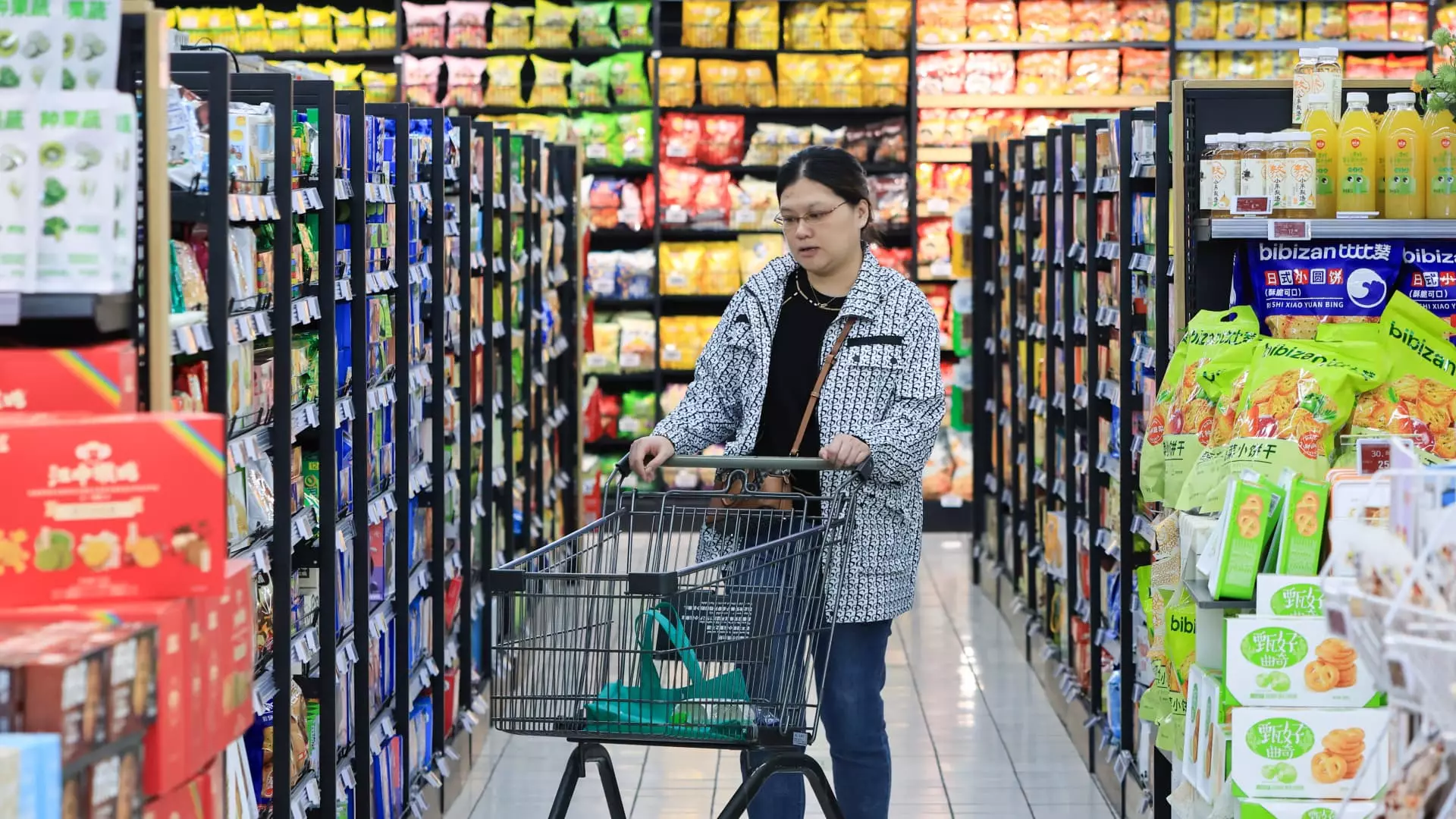China’s economy, a critical engine for global growth, has recently showcased fluctuations in consumer inflation that are sparking discussions among analysts and policymakers alike. The National Bureau of Statistics released data illustrating that consumer inflation fell to a five-month low in November, rising only 0.2% from the previous year. This figure starkly contrasts with expectations from analysts, who anticipated a modest increase to 0.5% compared to the 0.3% reported in October. Such discrepancies illuminate the complexities faced by China’s economic landscape as it wrestles with persistent structural challenges.
The Consumer Price Index (CPI) data brings to light notable trends. Core inflation, which excludes the fluctuating prices of food and fuel, has climbed from 0.2% in October to 0.3% in November. When drilling down into specific categories, pork prices have surged remarkably, rising by 13.7%, while fresh vegetable prices have also seen a significant increase of 10%. The data suggests that essential food items are experiencing inflationary pressures, which could impact the overall cost of living for consumers. Nevertheless, the broader picture remains concerning. The low overall retail inflation figure coupled with the historical context of previous months highlights a stagnating consumer demand, raising alarms about the underlying economic health of the nation.
In stark contrast, the Producer Price Index (PPI) has been in a state of decline for an extended period, marking its 26th consecutive month of decrease. November saw producer inflation drop by 2.5% year-over-year, slightly better than the anticipated 2.8% decline predicted by a Reuters poll. Of particular note is the sharp decrease in prices for ferrous metal materials, which fell by 7.1%, alongside significant drops in fuel, power, and chemical raw materials. This sustained PPI deflation illustrates a critical imbalance in the supply-demand dynamics of the manufacturing sector. Erica Tay from Maybank emphasizes that an excess of accumulated inventories, both of raw materials and finished goods, persists as a key contributor to depressed prices, reinforcing the struggle against deflation.
China’s challenges are magnified by external factors, including trade tensions, particularly with the United States. Analysts like Becky Liu from Standard Chartered Bank suggest that ongoing trade disputes may further entrench deflationary pressures, noting that during such periods, negative inflation typically becomes prevalent. Looking forward, Goldman Sachs has echoed this sentiment, predicting that near-zero CPI figures are likely to linger into the next year, illustrating the deep-rooted nature of the current economic malaise.
Despite these hurdles, there are glimmers of optimism within other sectors of China’s economy. A report of October’s retail sales revealing unexpectedly strong growth highlights potential recovery signals. Moreover, manufacturing activities showed expansion during November, suggesting some resilience amid broader economic challenges. With leaders preparing for the annual Central Economic Work Conference, the focus will be on delineating economic strategies and stimulus measures aimed at revitalizing growth in 2025.
However, recent adjustments in growth projections by Fitch Ratings, lowering the GDP forecast for 2025 and 2026, calls for cautious optimism. The agency expects China’s growth to moderate to 4.3% in 2025, signaling concerns over prolonged stagnation in critical sectors like real estate. While there are hints of stabilization in the property market, the ongoing downturn remains a significant risk to economic projections.
China’s current financial landscape reveals a complex interplay of rising consumer prices in specific sectors against a backdrop of declining wholesale prices. While recent signs of resilience in retail and manufacturing offer hope, the specter of inflationary and deflationary challenges continues to loom large. As the nation approaches pivotal economic planning discussions, the focus will be on identifying actionable strategies to stimulate enduring growth and stabilize the economy in an increasingly turbulent global environment.

